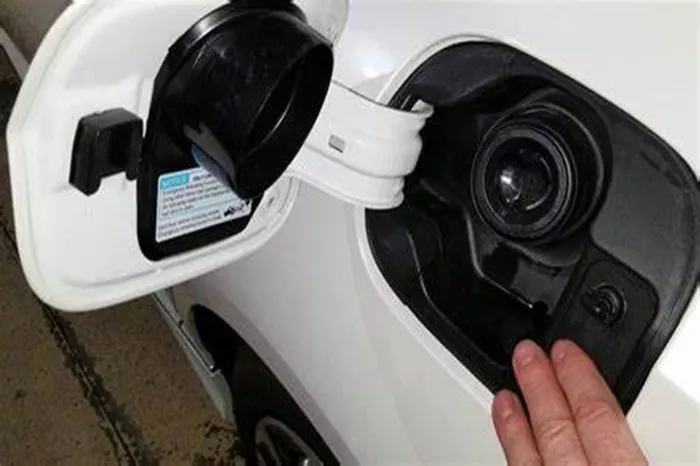The fuel tank capacity of a vehicle is a crucial factor that directly impacts its range, efficiency, and practicality. This article explores the various aspects of fuel tank capacity, from its definition and measurement to factors influencing capacity and its significance for vehicle owners.
What is Fuel Tank Capacity?
Fuel tank capacity refers to the volume of fuel that a vehicle’s fuel tank can hold. It is typically measured in liters (L) or gallons (gal) and determines how far a vehicle can travel on a full tank of fuel before needing a refill.
Measurement Units
Liters (L): Commonly used in most countries, liters are a metric measurement of volume.
Gallons (gal): Used primarily in the United States and some other countries, gallons measure liquid volume.
Standardization
Standard Sizes: Fuel tanks come in various sizes depending on the vehicle type and model. Standard passenger vehicles may have smaller tanks compared to commercial trucks or SUVs designed for long-distance travel.
Factors Influencing Fuel Tank Capacity
Several factors influence the fuel tank capacity of a vehicle, including:
Vehicle Type and Size
Compact Cars: Typically have smaller fuel tanks to optimize space and weight.
SUVs and Trucks: Often equipped with larger tanks to accommodate longer distances and heavier loads.
Fuel Efficiency
Engine Efficiency: Vehicles with higher fuel efficiency may have smaller tanks since they require less fuel for the same distance.
Design Considerations
Vehicle Design: Tank size is influenced by the vehicle’s overall design and intended use, balancing factors like performance, space, and cost.
Importance of Fuel Tank Capacity
Range
Driving Distance: A larger tank allows for longer distances between refueling stops, ideal for long trips and remote areas.
Convenience
Reduced Stops: Larger tanks mean fewer stops for refueling, saving time and adding convenience during travel.
Cost Efficiency
Economic Considerations: Efficient use of fuel can reduce overall costs associated with frequent refueling.
Types of Fuel Tanks
Single vs. Dual Tanks
Single Tank: Most vehicles have a single fuel tank for regular use.
Dual Tanks: Some larger vehicles, like trucks, may have dual tanks to increase total capacity.
Material
Steel Tanks: Traditional material offering durability and resistance to damage.
Plastic Tanks: Lightweight and corrosion-resistant, commonly used in modern vehicles.
Considerations for Vehicle Owners
Practicality
Daily Use: Consider how often you drive and the typical distances covered.
Storage Space: Larger tanks may occupy more space, affecting cargo capacity.
Fueling Infrastructure
Availability: Ensure that fuel stations along your regular routes can accommodate your vehicle’s range.
Environmental Impact
Efficiency: Opt for a tank size that balances your travel needs with environmental considerations.
See also: Can I Put Diesel Fuel In My Oil Tank?
Calculating Fuel Consumption
MPG (Miles per Gallon)
Fuel Efficiency: Calculate how many miles your vehicle can travel per gallon of fuel.
Range Calculation: Multiply MPG by tank capacity to estimate total range on a full tank.
Driving Conditions
City vs. Highway: Consumption rates vary based on driving conditions and speed.
Maintenance and Safety
Tank Inspections
Regular Checks: Inspect for leaks, rust, or damage that could affect performance.
Cleaning: Keep the tank and fuel system clean to prevent contaminants from entering the engine.
Safety Precautions
Ventilation: Ensure proper ventilation of the fuel tank to prevent vapor buildup.
Fuel Quality: Use recommended fuel types to avoid damage to the tank and engine.
Future Trends in Fuel Tank Technology
Hybrid and Electric Vehicles
Shift Towards Electric: Electric vehicles are reducing reliance on traditional fuel tanks.
Hybrid Options: Combining electric power with smaller, more efficient fuel tanks.
Alternative Fuels
Biofuels: Increasing use of renewable biofuels with different storage requirements.
Hydrogen: Development of hydrogen fuel tanks for fuel cell vehicles.
Conclusion
Understanding fuel tank capacity is essential for vehicle owners to optimize efficiency, plan travel routes, and ensure practicality in daily use. By considering factors like vehicle type, driving habits, and future trends in fuel technology, consumers can make informed decisions that align with their needs and environmental goals.
This comprehensive guide to fuel tank capacity provides valuable insights into its significance, influencing factors, and considerations for vehicle owners. Understanding these aspects can help consumers better manage their fueling needs and optimize their driving experience.
Fuel Tank Capacity FAQs
1.How to Determine Fuel Tank Capacity?
Determining the fuel tank capacity of a vehicle involves several methods:
Manufacturer Specifications: Check the vehicle’s owner manual or manufacturer’s website for detailed information.
Physical Inspection: Locate the fuel tank and look for labels or markings indicating capacity.
Calculation: In some cases, you may estimate capacity by measuring dimensions and using standard formulas.
2.What is a Good Fuel Tank Capacity?
The suitability of fuel tank capacity depends on various factors:
Usage: Consider how frequently you drive and the typical distances covered.
Vehicle Type: Larger vehicles like SUVs and trucks may benefit from larger tanks for longer ranges.
Convenience: A good capacity strikes a balance between range and practicality, reducing frequent refueling stops.
3.What is the Actual Fuel Tank Capacity?
The actual fuel tank capacity refers to the total volume of the tank:
Nominal vs. Actual: Manufacturers often provide both nominal (standard) and actual capacities, accounting for internal fittings and space.
Measuring: It’s the total volume the tank can hold when filled to its maximum capacity, including any internal components.
4.What is the Usable Capacity of a Fuel Tank?
The usable capacity of a fuel tank refers to the amount of fuel that can be effectively used:
Reserve and Safety Margins: Tanks often have a small reserve to prevent engine damage due to low fuel levels.
Practical Limitations: Usable capacity considers factors like fuel pickup location and residual fuel that cannot be effectively used.
5.How to Calculate Tank Capacity?
Calculating tank capacity involves straightforward measurements and calculations:
Rectangular Tank: Multiply length, width, and height to determine volume.
Cylindrical Tank: Use the formula π × radius^2 × height.
Irregular Shapes: Break down into simpler shapes or use displacement methods for accurate calculations.
Related topics:
Western Global Introduces Non-Hazmat Multi-Tank Diesel Fuel Trailer

